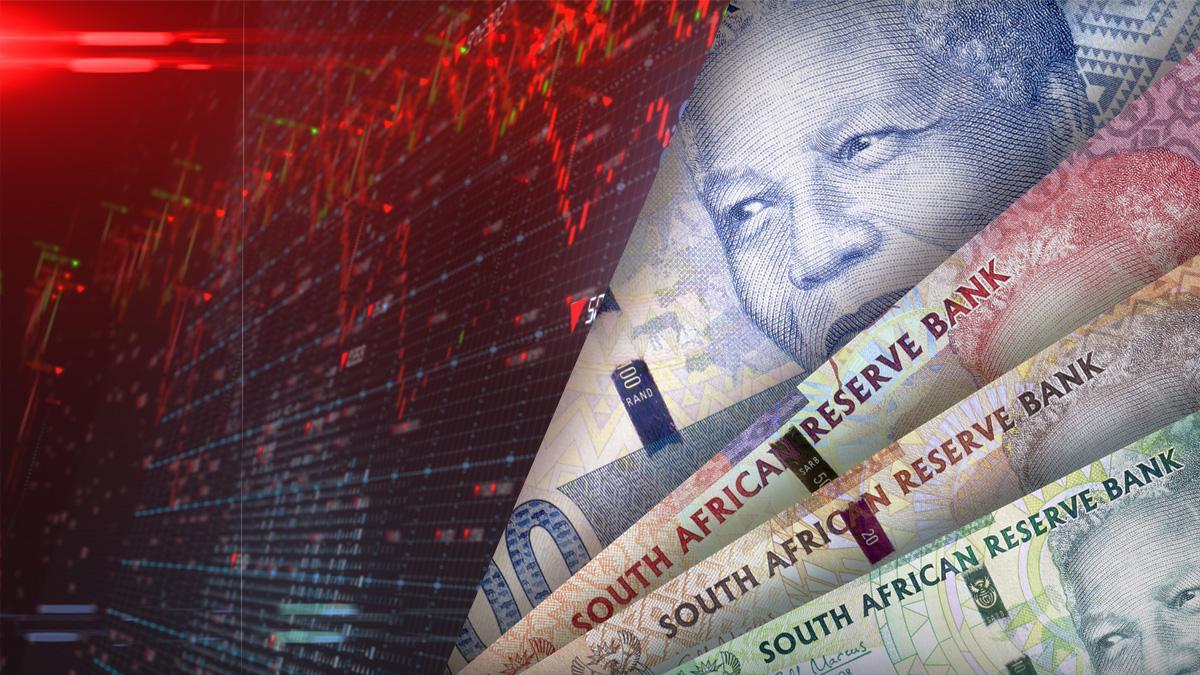Africa-Press – South-Africa. The rand’s value has collapsed in the past five years, declining by over 20% compared to major currencies such as the US dollar, euro, and pound.
In recent weeks, the currency has breached record lows against all three major currencies due to political instability within South Africa and ongoing geopolitical tensions.
While these sharp drops capture attention in the short term, the currency’s decline is more steady and predictable over the longer term.
This is because the currency’s value is determined largely by the performance of the local economy, the country’s trade balance, and inflation.
Old Mutual chief economist Johann Els explained that this is largely reflective of investor sentiment towards South Africa, which is largely determined by economic fundamentals.
Thus, the rand’s constant depreciation since 1994 reflects a gradual lack of confidence in the South African economy and increased political uncertainty in the country.
The rand is known for its volatility, as investors see it as a proxy for their sentiment towards emerging markets and commodities.
This results in significant value swings influenced by economic data from South Africa’s primary exports and, more importantly, investors’ risk tolerance.
However, these fluctuations are generally short-term, as the rand typically continues its long-term trend of depreciating against the dollar at an annual rate of around 5%.
The Bureau of Economic Research (BER) pointed out a different explanation, emphasising the role of inflation differentials in weakening the rand.
Typically, South Africa’s headline inflation rate is higher than its developed counterparts, requiring a degree of currency depreciation to ensure its exports remain competitive.
As inflation raises the cost of producing exports, they become less attractive than cheap alternatives. To counteract this, a currency is weakened deliberately to make the country’s exports relatively cheaper on the global marketplace.
These longer-term factors have been coupled with short-term hits for the rand, with rising global uncertainty and political uncertainty accelerating its steady weakening.
Investors tend to sell out of riskier emerging market assets amid periods of global uncertainty, preferring ‘safe havens’ such as the United States, Europe, and Japan.
This results in the weakening of emerging market currencies, such as the rand, as investors dump local equities and bonds.
The graph below, courtesy of Stanlib chief economist Kevin Lings, shows the steady decline of the local currency compared to major global currencies in recent years.
It is indexed to 2017, one year before Cyril Ramaphosa ascended to the Presidency.
Rand can stage a comeback
The rand has not always been significantly weaker than the dollar and other major currencies. It held its own for the decade from 2004 to 2014.
This was largely due to improving South Africa’s economic fundamentals and, thus, investor sentiment throughout those decades.
Under the first two democratically elected administrations, South Africa’s fiscal deficit gradually declined, the country avoided falling into a debt trap, and growth began to pick up.
For the first fifteen years of democracy, the country’s economy grew at an average annual rate of 3.6% while the government steadily reduced its deficit.
In 2007/08, the government even managed to post a full budget surplus. These factors supported the rand’s value and stopped it from weakening for a decade.
This changed dramatically when Jacob Zuma replaced Thabo Mbeki as President. Pravin Gordhan stepped in as Finance Minister after Trevor Manuel, leading to a surge in government expenditure.
The robust GDP growth seen during Mbeki’s presidency ended, and the nation’s debt began to climb swiftly under Zuma’s leadership.
The last instance of a budget surplus occurred in the 2007/08 financial year. Since then, the government has recorded 16 consecutive years of budget deficits.
This pattern persisted and intensified under President Cyril Ramaphosa despite his and the Finance Minister’s commitments to fiscal responsibility.
Consequently, South Africa’s average annual growth rate was a sluggish 1.1% between 2009 and 2023.
The phrase “lost decade” often refers to the period from approximately 2014 to the present, marked by stagnant economic growth, high unemployment, and growing inequality.
This decade saw the rand weaken severely from around R7/USD to above R18/USD, where it remains today as investor confidence in South Africa remains low.
For More News And Analysis About South-Africa Follow Africa-Press






